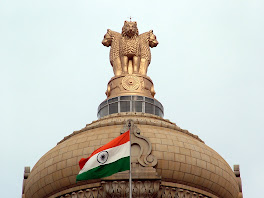The Indo-US nuclear deal enjoys considerablesupport in the US policy community—WhiteHouse, Congress, State Department, and Neo-Con think tanks close to the Bush administration,(apart from the nuclear industry). They hope thatthe greatly improved relations with India would,hopefully, counter-balance the envelopingdisaster in Iraq. The present status of the Indo-USnuclear deal is that the US Atomic Energy Act of1954 has been amended to exempt India from itsprovisions; thus allowing the transfer of nucleartechnology to India despite its being outside theNonproliferation Treaty and not acceptingfullscope safeguards over its nuclear program.Now, the so-called 123 agreement must benegotiated by the two countries in line with thisenabling legislation.Core IssuesFour basic issues provide an overview to thepresent debate on the nuclear deal.First, have both countries over-invested in it? Thisviewpoint reflects the voice of caution. The moreintrepid would urge that negotiating a radicalIndo-US nuclear deal would raise their relationshipto a qualitatively higher level. In truth, both thesepositions are extreme. India needs to deepen itsrelations with the US, which occupies the apex ofpolitical, military, economic and technologicalpower in the international system. The US needs toincorporate a democratic, multiethnic and risingIndia into its strategic fold to shape the evolvinginternational system. It is arguable therefore thatIndo-US relations will weather the fate of thenuclear deal, whichever direction it takes.
Second, what are the compulsions informing bothcountries to negotiate this deal? India requiresnuclear technology from abroad—specificallynatural uranium for its heavy water reactors, lowenriched uranium for its light water reactors, andtechnical information to hasten its fast breederreactor program. But it will not join theNonproliferation Treaty or accept fullscopesafeguards. In lieu, the Bush Administration wishes toco-opt India into its strategic schema for containingthe growing challenge from China. In essence, theUnited States is sacrificing its commitment to thenonproliferation regime at the altar of regionaldiplomacy. This suits New Delhi. Besides gainingrecognition for its nuclear weapon status, it canacquire nuclear technology and internationalfinance to expand its atomic energy program,while ceasing to be excluded by technologycontrol regimes like the Nuclear Suppliers Group(NSG).Third, the intense debate in India on this deal hasbeen frugal on assessing the place of atomicenergy in India’s energy future. Only 3000 MWs, lessthan 3 % of its total power, is presently beinggenerated by the Atomic Energy Commission(AEC), despite some 50 years of strenuous effort.The Sarabhai profile (1970) had envisaged the AECproducing 10,000 MWs by 1980. Now, it is promisedthat 30,000 MWs would be generated by 2022 and63,000 MWs by 2032. How realistic are these targets,if the AEC’s past record is reviewed? No details areavailable on where the finances for this giganticprogram would be found or how the accentuatedproblems of reactor safety or waste disposal wouldbe addressed. Apropos, wind power productionover the last decade has crossed 4000 MWs. Awilling suspension of disbelief is needed to acceptthe AEC’s grandiose schemes.PR ChariResearch Professor, IPCS Fourth, the centrality of the AEC in India’s nucleardecision-making processes has greatlyaccelerated after the Indo-US nuclear deal wasreached on July 18, 2005. The frequency of theAEC Chairman’s public statements, often contraryto the positions taken by the Ministry of ExternalAffairs, bears testimony to this phenomenon. TheAEC’s new centrality in the nuclear decisionmakingprocess is also manifested by the PrimeMinister conceding that any final agreementreached with the United States would bereviewed by a group of AEC retirees, which is amodality unknown before in the annals of theIndian administration. The AEC’s power derivesprimarily from its proximity to the Prime Minister, itssecretive ways of working, and its now becomingthe repository of India’s magic nuclear deterrent.
30.05.2011
14 years ago



No comments:
Post a Comment